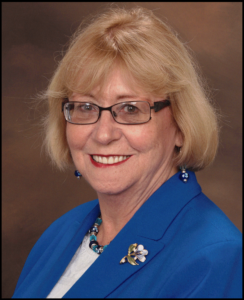Final Rule – Certification Procedures
AUTOMATIC RENEWAL OF CERTIFICATION
- 668.13 Certification Procedures
The Final Rule repeals the automatic granting of a renewal of institutional certification based upon a lack of Department action.
The following regulatory language is repealed.
(b) Period of Participation
(3) In the event that the Secretary does not make a determination to grant or deny certification within 12 months of the expiration of its current period of participation, the institution will automatically be granted renewal of certification, which may be provisional.
The Final Rules also makes the conforming revision to remove the automatic renewal under (c)(1)(i)(F).
Fame Comment: ED does not have to recertify institutions within the proposed 12- month deadline.
PROVISIONAL CERTIFICATION
- 668.13 Certification Procedures
The Final Rule amends that provisional certification requirements providing the Secretary with the authority to place an institution of higher education on provisional certification as follows:
(C) The institution is a participating institution that is applying for a renewal of certification –
- That the Secretary determines has jeopardized its ability to perform its financial responsibilities by not meeting the factors of financial responsibility under subpart L of this part or the standards of administrative capability under § 668.16;
- Whose participation has been limited or suspended under subpart G of this part; or
- That voluntarily enters into provisional certification;
(D) The institution seeks to be reinstated to participate in a title IV, HEA program after a prior period of participation in that program ended.
PROVISIONAL CERTIFICATION BASED UPON RISK OF CLOSURE
- 668.13 Certification Procedures
The Final Rule further amends the provisional certification requirements providing the Secretary with the authority to place an institution of higher education on provisional certification if (s)he determines the institution is at risk of closure or the institution is out of compliance with the Financial Responsibility regulations.
(F) The Secretary has determined that the institution is at risk of closure; or
(G) The institution is under the provisional certification alternative of subpart L of this part.
PROVISIONAL CERTIFICATION
- 668.13 Certification Procedures
The Final Rule further amends the provisional certification requirements to place an institution on provisional certification is specific Financial Responsibility requirements (HCM 1 or 2) are required or if an owner of multiple institutions has significant compliance issue at a separate institution, the other institution can also be implicated.
(ii) An institution’s certification becomes provisional upon notification from the Secretary if—
- The institution triggers one of the financial responsibility events under §668.171(c) or (d) and, as a result, the Secretary requires the institution to post financial protection; or
- Any owner or interest holder of the institution with control over that institution, as defined in 34 CFR 600.31, also owns another institution with fines or liabilities owed to the Department and is not making payments in accordance with an agreement to repay that liability.
Fame Comment: This means that ED could put additional institutions, with like ownership, on Provisional Certification, (HMC 1 & 2) requiring multiple LOCs.
90/10 PROVISIONAL CERTIFICATION TRIGGER
- 668.13 Certification Procedures
The Final Rule further amends the provisional certification requirements to automatically make a proprietary institution of higher education provisionally certified if it fails the 90/10 Rule.
(iii) A proprietary institution’s certification automatically becomes provisional at the start of a fiscal year if it did not derive at least 10 percent of its revenue for its preceding fiscal year from sources other than Federal educational assistance funds, as required under § 668.14(b)(16).
Fame Comment: The changes in the 90/10 rule for 2023, will cause some institutions to fail the calculation and require provisional certification and a LOC.
PROVISIONAL CERTIFICATION ELIGIBILITY LIMITS
- 668.13 Certification Procedures
The Final Rule sets eligibility parameters for institutions placed on provisional certification when an institution is forced to find an alternate accrediting agency.
(iii) If the Secretary provisionally certified the institution as a result of its accrediting agency losing recognition, not later than 18 months after the date that the Secretary withdrew recognition from the institution’s nationally recognized accrediting agency.
SUPPLEMENTAL PERFORMACE MEASURES
- 668.13 Certification Procedures
The Final Rule provides the Secretary with another set of discretionary certification assessment triggers.
(e) Supplementary performance measures.
In determining whether to certify, or condition the participation of, an institution under this section and § 668.14, the Secretary may consider the following, among other information at the program or institutional level:
- Withdrawal rate. The percentage of students who withdrew from the institution within 100 percent or 150 percent of the published length of the program.
- Educational and pre-enrollment expenditures. The amounts the institution spent on instruction and instructional activities, academic support, and support services, compared to the amounts spent on recruiting activities, advertising, and other pre-enrollment expenditures.
- Licensure pass rate. If a program is designed to meet educational requirements for a specific professional license or certification that is required for employment in an occupation, and the institution is required by an accrediting agency or State to report passage rates for the licensure exam for the program, such passage rates.
Fame Comment: If another accredtiting agency goes under, the institution may be placed on provisional certification for up to 18 months, and now ED has additional performance evaluations to determine if they want to allow the institution time to find and be approved by a new accreditor. ED will be looking at withdrwal rates, funds spent on instruction, academic and support services verses advertising, recruiting, etc., and licensure pass rates. Any institutional on show cause or probation may have difficulty getting provisional approval
STATE LICENSURE ELIGIBILITY REQUIREMENTS
STATE LICENSURE ELIGIBILITY REQUIREMENTS
- 668.43 Institutional and Programmatic Information
- (v) If an educational program is designed to meet educational requirements for a specific professional license or certification that is required for employment in an occupation, or is advertised as meeting such requirements, a list of all States where the institution has determined, including as part of the institution’s obligation under § 668.14(b)(32), that the program does and does not meet such requirements.
STATE LICENSURE ELIGIBILITY REQUIREMENTS
- 668.43 Institutional and Programmatic Information
- (c)(1) If the institution has made a determination under paragraph (a)(5)(v) of this section that the program’s curriculum does not meet the State educational requirements for licensure or certification in the State in which a prospective student is located, or if the institution has not made a determination regarding whether the program’s curriculum meets the State educational requirements for licensure or certification, the institution must provide notice to that effect to the student prior to the student’s enrollment in the institution in accordance with § 668.14(b)(32).
- (2) If the institution makes a determination under paragraph (a)(5)(v) of this section that a program’s curriculum does not meet the State educational requirements for licensure or certification in a State in which a student who is currently enrolled in such program is located, the institution must provide notice to that effect to the student within 14 calendar days of making such determination.
Fame Comment: Students must be notified by the institution if the requirements for licensure or certification are not met based on where the student is located.
About the Authors:
Materials and content originate from the Department of Education posting, with insights and summaries provided by Tom Netting and Sally Samuels.
Sally Samuels, Director of Compliance, Fame
Sally is one of the country’s leading authorities on Federal financial aid administration with more than 43 years of “in the trenches” experience. As a respected Industry leader, she is frequently called upon to speak at School, Accrediting, Regional and State conferences as well as to act as school liaison during program reviews and compliance audits.
Having processed, reviewed and taught financial aid for over 40 years Sally brings real life experiences, observations and illustrations to her audience adding a touch of humor to regulatory compliance. Her style makes the sometime complex topics easy to understand and audiences always come away with practical knowledge that they can apply to their everyday situations. Sally has been published many times in various Higher Education periodicals providing her expertise and insight on administering Federal funding based on compliance with the Federal statutes.
Tom Netting, President/CEO, TEN Government Strategies, Co-Executive Director, CSPEN
Having spent all of his professional career devoted to higher education policy oversight and implementation, Tom Netting has an extensive knowledge of the laws and regulations governing all aspects of higher education. His considerable background and experience have afforded him the opportunity to view the development and implementation of federal higher education and workforce development policy in their entirety – including issues related to higher education and workforce development, health care, veteran affairs policies and the procurement of federal appropriations.






